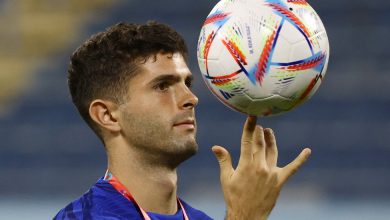Manuel Santana, Influential Spanish Tennis Champion, Dies at 83

MADRID — Manuel Santana, who as one of Spain’s first great tennis champions won four Grand Slam titles in the 1960s and heralded his country’s arrival as a tennis powerhouse, died on Saturday in Marbella, the beach town in southern Spain where he had long lived and managed a tennis club. He was 83.
His death was announced by the Mutua Madrid Open tennis tournament, where Santana was honorary president. No cause was given, but Marcos García Montes, a lawyer and close friend of his, told a Spanish television show that Santana had died of a heart attack. He had been diagnosed with Parkinson’s disease.
Santana, the first Spaniard to win a Grand Slam event, rose to the top echelon of world tennis during the amateur era by winning the U.S. National Championships at Forest Hills, Queens, Wimbledon and the French Open, twice. He also represented Spain in winning a gold medal in singles and a silver in doubles at the 1968 Olympic Games in Mexico City (when tennis was a demonstration sport at the Games).
His victories inspired a host of Spanish players, who have kept Spain among the most successful countries in tennis to this day.
That progeny includes Manuel Orantes, Carlos Moyá, Arantxa Sánchez Vicario and Conchita Martínez. The greatest of them all, Rafael Nadal, a 20-time Grand Slam champion, called Santana his role model on Twitter. “A thousand thanks for what you did for our country and for opening the way for others,” he said.
Santana, who never played in the Australian Open, and Sánchez Vicario are second to Nadal in Slam victories, with four each.
Santana won 72 tournaments in his career. His first success in a Grand Slam came in 1961 in Paris on his favorite surface, clay. He defeated two Australian stars, Roy Emerson and Rod Laver, before capturing the final against Italy’s Nicola Pietrangeli, a two-time winner in Paris. Three years later, Santana defeated Pietrangeli again in the French Open.
In 1965, Santana established his credentials on grass, the surface he had once derided as made for cows and the one used at the time by three of the Grand Slam tournaments: Wimbledon, Forest Hills and the Australian Open. He became the first European in almost four decades to win at Forest Hills that year, beating Cliff Drysdale in the final of the tournament, which was later renamed the U.S. Open.
The next year, Santana skipped the French Open to better prepare for Wimbledon. The strategy worked: He defeated Dennis Ralston in the final. Upon receiving the trophy, Santana sought to kiss the hand of the Duchess of Kent, a breach of royal protocol. But the breach endeared him further to Spanish fans, who viewed him as a charismatic and warmhearted product of society’s margins in a sport once considered a realm of the elite.
Manuel Santana Martínez was born on May 10, 1938, in Madrid. His father, Braulio Santana, was an electrician who was imprisoned after the Spanish Civil War and died when his son, known as Manolo, was a teenager. His mother, Mercedes Martínez, was a homemaker who struggled to raise her four children in an apartment building in which all the residents shared a single bathroom.
Santana started at the Velázquez tennis club in Madrid as a ball boy, skipping school to collect tips from tennis players and earn money to support his mother. Tennis drew him, he said, because of the distance between competitors. “For somebody who always hated violence, a sport in which a net prevented physical contact felt like it was made for me,” he told the newspaper La Rioja of Logroño.
At the club, he regularly prepared the clay court for two siblings from a wealthy family, Álvaro and Aurora Romero Girón.The two took an interest in Manuel and encouraged him to combine tennis with a commitment to school, while also providing financial support for Santana’s mother.
When he was 13, he won the ball boys tournament at the Velázquez club and was officially admitted as a member. His game developed, and Santana, relying on an effective topspin, powerful forehand and craftily disguised drop shots, won the Spanish junior championships in 1955.
“His game was pretty unique, and even though he was one of the best clay courters ever, he could play on anything,” said Stan Smith, the American former top player and president of the International Tennis Hall of Fame, which inducted Santana in 1984. “He was an ultimate big occasion competitor, but I don’t know anyone who didn’t like and respect him,” Smith added, in a statement on the hall’s website.
After retiring as a tennis player, Santana went on to be captain of Spain’s Davis Cup team from 1980 to 1985 and 1995 to 1999. He managed two tennis clubs — in Madrid as well as Marbella — and until 2019 was the tournament director of the Mutua Madrid Open, whose center court was named after him.
A fixture on the Spanish social scene, Santana was married four times and had five children. He is survived by his wife, Claudia Rodríguez; three children, Beatriz, Manolo and Borja, by his first wife, María Fernanda González-Dopeso; a daughter, Bárbara, with Bárbara Oltra; and another daughter, Alba, whose mother, Mila Ximénez, was a well-known Spanish journalist who died this year. Santana’s 1990 marriage to Otti Glanzelius, a former Swedish model, ended in divorce in 2009.





